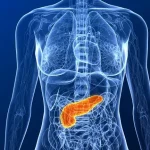by: Desiree Delavary
Attention Deficit Hyperactivity Disorder, more commonly known as ADHD, is characterized by three different qualities: inattention, hyperactivity, also known as being overactive, and impulsivity, or acting without thinking. Often thought of as a childhood disorder that goes away with age, contrasting new evidence has suggested that ADHD is a lifelong disorder. Lily Hechtman and a team of researchers at various institutions including McGill University and UC Berkeley conducted a longitudinal study that followed individuals diagnosed with ADHD in their youth in order to determine outcomes 16 years past diagnosis. These individuals were compared to a “control” group of individuals that had never been diagnosed with the disorder.
There has been evidence pointing to differences in functional outcomes between adults who were diagnosed with ADHD in childhood and individuals with no diagnosis. In a variety of previous studies, individuals diagnosed with ADHD during childhood were found to report substantially greater impairment regarding educational, occupational, social, and emotional criteria as adults, as compared to the adult control group with no childhood diagnoses. However, some of the previous studies used small sample sizes in which the persistence of ADHD symptoms had not been “optimally defined,” making subgrouping symptoms difficult. As symptomatology varies between individuals and diagnoses, homogeneity in the adult outcomes has not yet been displayed. This variance indicates a varying degree of functionality despite the disorder. Some adults continue to have severe symptoms, whereas others do not. This range of functionality can be attributed to “persisting” or “desisting” ADHD symptoms. In the desisting case, symptoms lessen or cease to exist. Individuals with this diagnosis were of importance in the study conducted by Hechtman and her team.
Hechtman’s study followed 579 people diagnosed with ADHD between ages 9 and 12. These individuals were assigned to four varying conditions related to their ADHD treatment plan: treatment in community care, treatment through medication, treatment through therapy, or a combined treatment of therapy and medication. Following the initial “baseline” assessment, follow-ups were done in set intervals for the next sixteen years. The study suggests that outcomes differ between the control group and those diagnosed with ADHD as children across the four domains studied: educational, occupational, social and emotional. These outcomes resulted in three overarching result patterns, the most evident one being the control group having the “best outcomes.” Those whose ADHD symptoms persisted into adulthood had the worst outcomes and the desisting ADHD individuals occupied a middle ground between the two.
Learning more about the outcomes outlined in this study can assist in the intervention and treatment of both children and adults diagnosed with ADHD. This study determines three different patterns of outcomes which can be applied to future research. The “healthy control” group fared best, whereas individuals with ADHD symptoms still present had the worst outcomes in regards to education, occupation, social interactions, and emotional stability. Individuals who were diagnosed with ADHD and are symptom-desisted inhabited a middle ground. The study showed that individuals who had childhood ADHD suffer more multi-faceted impairment in their daily lives, even when symptoms have desisted. This indicates that it is important to focus on intervening to improve functional outcomes early after diagnosis.





